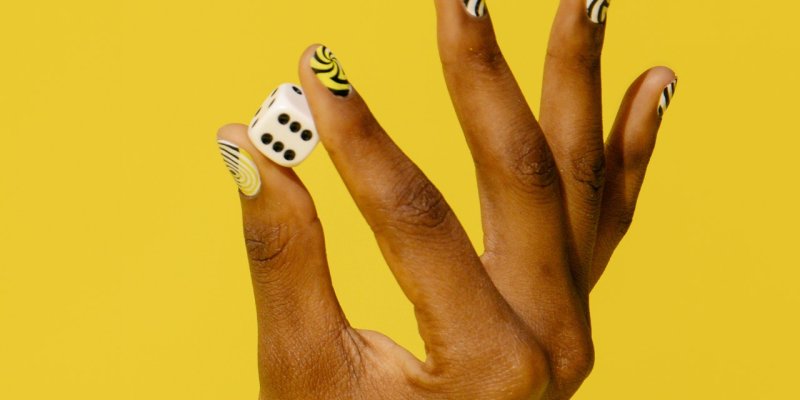
Chance music, also known as Aleatoric music, is a type of music that is created or performed using some form of probability.
In the 20th Century, many European composers were very intrigued with the idea of composing scores of music where the melody and rhythmic flow were left up to chance using dice.
As you can imagine, anyone can create an Aleatoric song since you wouldn't need to know much about how music works.
But the most popular chance songs only have one of a few elements left up to chance, while the composer then adds other elements that will fit the chance elements to make more musical sense in the end.
As an example, a composer or songwriter can decide to create a melody line for their chorus or refrain completely randomly by rolling dice. They would then follow up with logical chord progression and rhythmic flow that would make the music phrase more cohesive.
A variety of things can determine the probability outside of rolling dice. Artist and creator Jarbas Agnelli made "Birds On A Wire" using the position probability of real birds sitting on five real wires that reminded him of a music staff.
Other chance compositions made by deeply skilled nerds have sections that are designed and controlled by the composer, while mathematical theories control the single components of sound.
As a creator, you can also encourage performers or conductors to use a form of chance when it comes to the performance aspect of the song.
For example, many 20th-century composers liked to leave the order of movements in a piece up to a conductor's random choice right before the performance started.
Singers and instrumentalists can also choose how to sing certain sections of a song, which can tie into improvisation and ad-libbing, often found in jazz and Latin music.
With the element of chance in the performance aspect, the song will always be done each time uniquely.
Related Post: 3 Ways Backing Vocals Can Elevate A Song
As described above, here's Jarbas Agnellis's example of chance music being made in a way that would be sonically pleasing to most ears.
Here, the birds were used to determine which notes would be played, but the overall key of the song still followed the scale of A minor.
The most popular example of chance music is John Cage's "Music Of Changes" which was released in 1951. Many more elements of this song were left up to choice in comparison to the example above.
Here, the method is referred to as Indeterminacy, which some like to use interchangeably with the term Aleatoric, while other music theory nerds will fight you for saying that.
Though the detailed technicalities may differ here and there, the general concept of using the art of chance to create or perform is the same.
Atonal music, which can often sound a lot like chance music, is a style of music that does not follow the traditional harmonic concept of a key or a mode.
While chance music allows probability to take the wheel in the composition, atonal music is still carefully and purposefully created one note at a time. Those notes don't follow the rules that our ears are used to hearing in Western music styles.
Songwriters and composers are often plagued with bouts of writer's block where they are unable to come up with melodies, lyrics, or other elements of a song.
I have not seen Aleatoric methods being recommended with other songwriting exercises like the 10-minute song, the word association song, or freewriting.
Yet, I believe that using chance music methods can be a great exercise for writers who need some inspiration and fun creativity in their process.
You don't have to go full chance like the "Music Of Changes" example, but simply adding the element of chance to a tiny part of your songwriting process may take your songwriting session to brand new heights!
Related Post: 10 Fun Songwriting Exercises To Boost Your Creativity
Chance music, or aleatoric music, offers a fascinating approach to composition and performance. By introducing elements of probability and randomness, composers can create unique and unpredictable musical pieces.
While the concept of leaving elements up to chance may seem daunting, many composers find a balance by combining chance elements with other structured musical elements to ensure coherence and musical sense.
Chance can play a role both in the composition and performance aspects of music.
Composers can use methods like dice rolling or mathematical theories to determine melodies, rhythms, or chord progressions, while still maintaining control over other elements.
Performers can also embrace chance by improvising certain sections or allowing conductors to make random choices during a live performance.
Incorporating elements of chance into your own songwriting journey can offer inspiration and inject a sense of fun and creativity into the process.
Even a small element of chance can elevate your songwriting session to new and exciting heights. So, don't be afraid to roll the dice and explore the realm of chance music in your musical endeavors!

As a session singer, writer, and producer that has worked with over 300 clients to provide high-quality jingles, singles, and features, Yona spends her time creating and marketing new music and helpful resources for creators. Check out Yona’s latest releases on her Spotify, her Youtube and share if you like it!
If you are in need of singer, songwriter or song producer services, see what Yona Marie can offer you on her services page.